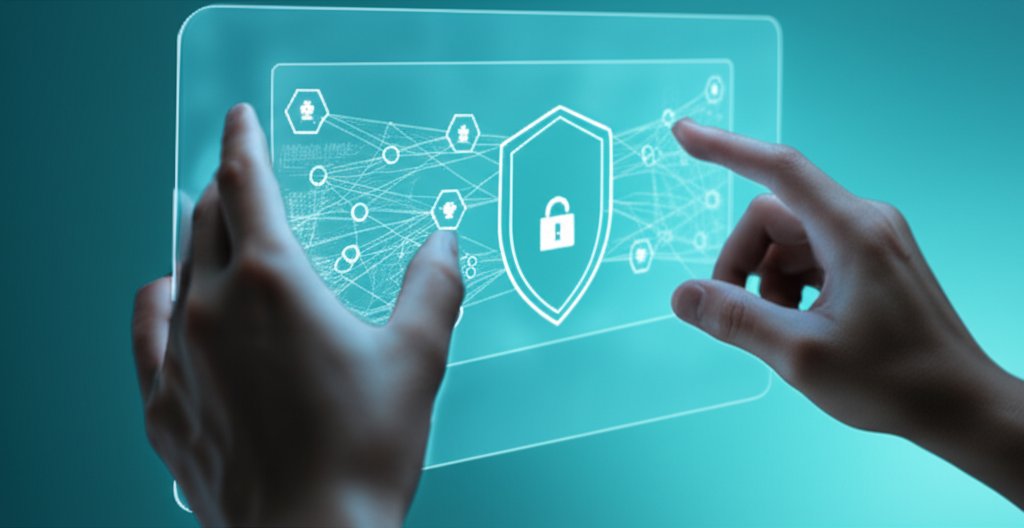Fortify Your Small Business Cybersecurity: 7 Essential Strategies with Zero Trust & Adaptive Identity Management
In today’s interconnected digital landscape, the challenge of safeguarding your online assets is growing more complex. Small businesses, often perceived as easier targets by sophisticated cybercriminals, face a barrage of threats that evolve at an alarming pace. It’s no longer just about defending against external attacks; significant risks can also originate from within your organization, even if unintentionally. This reality renders traditional security models—those built on a strong perimeter and implicit trust for internal users—dangerously inadequate. It’s time for a fundamental overhaul in how we approach digital safety, and that shift is rooted in the powerful philosophy of Zero Trust.
At its core, Zero Trust operates on the principle of “never trust, always verify.” Imagine it this way: every user, every device, every application, and every data request is treated as if it’s originating from an untrusted, external network, regardless of whether it’s already “inside” your perceived digital boundary. There are no free passes. However, in a world where conditions and contexts are constantly shifting, a one-time verification isn’t enough. This is precisely where Adaptive Identity Management (AIM) becomes indispensable. AIM acts as the intelligent engine, making Zero Trust truly dynamic and responsive by continuously assessing who you are, what you’re trying to access, from where, and under what circumstances.
The combination of Zero Trust with Adaptive Identity Management creates a remarkably robust, yet surprisingly user-friendly, defense against modern cyber threats. It’s about constructing a security framework that not only blocks intruders but intelligently adapts to real-time context, ensuring your data protection and digital privacy are consistently top-tier. To help you take control of your digital security, we’re going to explore 7 smart and practical ways you can leverage this formidable duo for your business. We’ve carefully selected these strategies for their significant impact on overall security, their accessibility for small teams, their clear integration with Zero Trust and Adaptive Identity Management principles, and their actionability.
Understanding the Building Blocks: Zero Trust and Adaptive Identity
Before we dive into the practical “how-to,” let’s quickly solidify our understanding of the “what.” You’ve likely encountered these terms, but what do they truly mean for the security posture of your business?
What is Zero Trust, Simply Put?
Zero Trust isn’t a product you purchase; it’s a security philosophy, a fundamental mindset. It operates on the unwavering principle that trust is never granted implicitly; instead, it must be rigorously and continuously evaluated. Its core tenets include:
- Verify Explicitly: Every user and device must be authenticated and authorized based on all available data points—their identity, geographical location, device health, time of day, the specific service being accessed, and more. Nothing is assumed to be safe. It’s about explicit Trust, not implicit acceptance.
- Least Privilege Access: Users and devices should only be granted the absolute minimum level of access required to perform their specific tasks, and only for the exact duration needed. No more, no less.
- Assume Breach: Always operate under the assumption that a breach has either already occurred or is imminent. This proactive mindset means your security controls are designed to minimize the impact of a breach, not solely to prevent its initial occurrence. This constant vigilance builds robust Trust.
What is Adaptive Identity Management?
Beyond rudimentary passwords, Adaptive Identity Management (AIM) is a sophisticated system that dynamically adjusts security requirements based on the context and perceived risk of each access attempt. It’s far smarter than simply demanding a password every single time. For instance, if you’re logging in from your usual office computer during standard work hours, AIM might allow for smoother, less intrusive access. However, if an attempt is made to log in from a new, unrecognized device in a different country at 3 AM, AIM will likely escalate the security challenge, perhaps by requiring an additional multi-factor authentication prompt. It intelligently understands that not all access attempts carry the same level of risk, constantly evaluating Trustworthiness in real time. For businesses exploring next-gen identity solutions, decentralized identity offers interesting security paradigms.
Why They Work Better Together
Consider Zero Trust as the steadfast security guard who declares, “Show me your ID, every single time.” Adaptive Identity Management is the intelligent supervisor who informs the guard, “Based on these specific factors, this individual requires a thorough pat-down, but that person only needs a quick glance at their badge.” While Zero Trust establishes the rigorous “never trust, always verify” mandate, AIM provides the intelligence to make those verifications flexible, contextually relevant, and significantly less burdensome for legitimate users. Without AIM, Zero Trust can feel cumbersome, hindering productivity with constant, identical security checks. AIM bridges this “static identity” gap, providing continuous, real-time Trust assessment, thereby making Zero Trust not only profoundly effective but also eminently practical for daily business operations.
7 Ways to Fortify Your Zero-Trust Architecture with Adaptive Identity Management
1. Upgrade to Adaptive Multi-Factor Authentication (MFA)
You’re likely already using Multi-Factor Authentication (MFA), which is an excellent foundational step! It ensures your password isn’t the sole barrier protecting your accounts. But what if your MFA could be smarter? Adaptive MFA takes security a crucial step further. Instead of merely asking for a code every time, it intelligently uses contextual data—like your typical login location, the device you’re using, and even the time of day—to determine when and what kind of MFA challenge to issue. This could mean a simple push notification if activity seems normal, but a full biometric scan or a code from a hardware token if there’s unusual or higher-risk activity. This advanced approach aligns with the principles of passwordless authentication, further enhancing security.
Why It Made the List: This is a fundamental layer of defense. By making MFA adaptive, you achieve stronger security precisely when it’s most needed, without constantly frustrating users with unnecessary prompts during low-risk activities. It’s the intelligent mechanism behind granting access with appropriate levels of Trust.
Best For: All small businesses seeking robust yet user-friendly authentication that dynamically adjusts to perceived risk.
Pros:
- Significantly reduces the risk of credential theft and account compromise.
- Improves user experience by reducing unnecessary friction during low-risk logins.
- Dynamically responds to evolving threat landscapes and user behavior.
Cons:
- Requires careful configuration and ongoing tuning to balance security and usability.
- Initial setup and user education may be needed to ensure adoption.
2. Implement Dynamic “Least Privilege” Access (Just-in-Time/Just-Enough Access)
The principle of “least privilege” is a cornerstone of Zero Trust: users should only have the absolute minimum access necessary for their tasks. But what if that access could be even more dynamic and transient? With Adaptive Identity Management, you move beyond permanent, broad permissions to “Just-in-Time (JIT)” and “Just-Enough Access (JEA).” This means access is granted only when it’s critically needed for a specific task and only for the exact, limited duration required. Once the task is completed, the access is automatically revoked.
Why It Made the List: This strategy drastically reduces your “attack surface.” If an attacker manages to compromise an account, they will have extremely limited access and only for a short window, preventing them from moving freely through your systems and causing widespread damage. AIM makes this automated and practical, significantly reducing manual administrative effort.
Best For: Businesses handling sensitive customer data, valuable intellectual property, or those with stringent regulatory compliance requirements.
Pros:
- Significantly minimizes the potential impact and lateral movement of an attacker from a compromised account.
- Enhances compliance with various data protection and privacy regulations.
- Reduces the risk of insider threats, whether accidental data exposure or malicious actions.
Cons:
- Requires meticulous planning to define user roles and the specific resources they need for individual tasks.
- Can be complex to implement initially without specialized tools and expertise.
3. Embrace Continuous Monitoring and Behavioral Analytics
Effective security is not a one-time login check; it’s an ongoing, vigilant process. Adaptive Identity Management, especially when integrated with Zero Trust, enables continuous monitoring of user and entity behavior within your network. This means your systems are constantly watching for any unusual activity. Is someone attempting to log in at 3 AM from a country they’ve never visited? Are they suddenly trying to access highly sensitive files they’ve never touched before? These deviations from established normal behavior are critical red flags.
Why It Made the List: This capability allows you to detect threats during a session, not just at the initial point of login. It’s crucial for spotting insider threats, compromised accounts, or sophisticated attacks that might bypass initial authentication. By continuously assessing behavior, AIM helps maintain trust and prevents attackers from moving laterally through your network unnoticed, mitigating potential damage in real time.
Best For: Any business that wants to shift from reactive to proactive threat detection and prevent the unauthorized lateral movement of attackers within their network.
Pros:
- Detects subtle threats and anomalies that traditional, static security measures might miss.
- Provides real-time insights into potential security incidents, enabling rapid response.
- Prevents attackers from escalating privileges or accessing sensitive data after an initial compromise.
Cons:
- Can generate a large volume of data, requiring intelligent analysis to avoid alert fatigue among IT staff.
- Requires a baseline of “normal” behavior to be established, which takes time and data collection.
4. Secure Devices with Adaptive Posture Checks
In a Zero-Trust environment, security isn’t solely about who you are; it’s equally about what device you’re using and its overall security health. Adaptive Device Posture Checks continuously verify if a device attempting to access your resources complies with your established security policies. This includes automatically checking for up-to-date antivirus software, the latest operating system patches, a properly configured firewall, and ensuring the device hasn’t been compromised (e.g., jailbroken or rooted). If a device fails any of these critical checks, access can be denied or significantly limited until the security issues are resolved. This is particularly crucial for remote work security, where devices often operate outside traditional perimeters.
Why It Made the List: Compromised or vulnerable devices are a common and dangerous entry point for attackers. By ensuring that only healthy, secure devices can access your valuable data, you significantly reduce your overall risk exposure. AIM continuously monitors and adjusts access based on dynamic device health, ensuring that even if a device becomes compromised during an active session, its access can be immediately restricted to contain the threat.
Best For: Businesses with remote employees, those supporting bring-your-own-device (BYOD) policies, or any environment where users access resources from a variety of endpoints.
Pros:
- Prevents malware-infected or vulnerable devices from accessing sensitive company resources.
- Enforces consistent security standards and compliance across all endpoints in your ecosystem.
- Reduces the risk of data exfiltration or malicious activity originating from compromised devices.
Cons:
- Requires robust endpoint management and security tools for effective implementation.
- Can sometimes cause temporary inconvenience for users if their devices fall out of compliance and require remediation.
5. Leverage Identity-Driven Microsegmentation
Traditional networks often have a relatively flat architecture, meaning that if an attacker manages to breach the external perimeter, they can often move with relative ease and freedom within the internal network. Microsegmentation fundamentally changes this by dividing your network into tiny, isolated segments—often down to individual applications or specific workloads. Identity-driven microsegmentation then utilizes Adaptive Identity Management to define precisely who (or what automated service) can access each segment, based on their continuously verified identity and real-time context.
Why It Made the List: This is an incredibly powerful “containment” strategy. If one part of your system or network is breached, microsegmentation acts as a series of internal firewalls, preventing the attacker from easily moving laterally to other, more sensitive areas. Adaptive identity provides the fine-grained control needed to make these segments truly effective, ensuring only rigorously authorized entities can cross segment boundaries.
Best For: Businesses with critical applications, sensitive databases, or complex network environments that require advanced capabilities to contain potential breaches and limit lateral movement.
Pros:
- Significantly limits the “blast radius” and potential damage of a security breach.
- Provides granular, identity-aware control over network traffic and resource access.
- Enhances overall network resilience and drastically reduces the ability of threats to move laterally.
Cons:
- Can be complex to design and implement, especially within existing, legacy environments.
- Requires careful mapping of applications, data flows, and user access patterns to be effective.
6. Implement Contextual Access Policies
Moving beyond simple “username/password” or even just basic “MFA,” contextual access policies leverage a wide array of dynamic factors to make real-time access decisions. This comprehensive context includes the user’s verified identity, the health and compliance of their device, their geographical location (e.g., securely within the office network versus a public Wi-Fi hotspot), the network being used, the current time of day, the sensitivity level of the resource being accessed, and even recent behavioral patterns. Adaptive Identity Management is the intelligent engine that continuously collects, analyzes, and acts upon all this crucial context.
Why It Made the List: This creates a highly nuanced and extraordinarily adaptive security posture. It means your security can be exceptionally stringent when the risk is elevated (e.g., accessing critical financial data from an unknown public location) but can offer a smoother, less intrusive experience when the risk is low (e.g., accessing your email from your trusted office computer). It makes security “smart” and dynamic, rather than merely “strict,” ensuring a continuous, intelligent Trust assessment.
Best For: Businesses with diverse access scenarios, hybrid workforces, or a critical need for highly granular and flexible control over resource access.
Pros:
- Provides highly flexible and intelligent security decisions that adapt to real-world scenarios.
- Enhances user experience by dynamically adjusting security friction based on legitimate use cases.
- Significantly strengthens defense against credential compromise, session hijacking, and unauthorized access.
Cons:
- Requires thoughtful definition, clear communication, and ongoing management of intricate policies.
- Can become overly complex if too many contextual factors are introduced without proper management and automation.
7. Simplify and Automate with AI-Powered Identity Workflows
Manually managing identities, access permissions, and complex security policies can be an overwhelming burden for any small business, let alone a larger enterprise. This is where Artificial Intelligence (AI) and Machine Learning (ML) become transformative, supercharging the capabilities of Adaptive Identity Management. AI can analyze vast amounts of data—from granular login patterns and device health reports to attempted resource access logs—to make intelligent, real-time risk decisions. It can also automate tedious and repetitive identity tasks, such as provisioning (granting access) or de-provisioning (revoking access) users, dynamically adjusting privileges based on role changes, and even proactively detecting subtle anomalies that indicate a nascent threat. These capabilities are transformative for improving incident response with AI-powered security orchestration.
Why It Made the List: For small businesses with limited IT resources, AI-powered automation is a genuine game-changer. It dramatically reduces manual effort, improves operational efficiency, ensures consistent policy enforcement, and significantly enhances the detection of sophisticated, subtle threats that might otherwise go unnoticed by human operators.
Best For: Businesses looking for substantial efficiency gains, advanced threat detection capabilities, and a more streamlined, future-proof approach to identity and access management.
Pros:
- Automates repetitive and time-consuming identity management tasks, freeing up valuable IT resources.
- Leverages advanced analytics to detect complex and evolving threats with greater accuracy.
- Improves overall security posture and resilience with less manual intervention and a proactive stance.
Cons:
- Effectiveness is highly dependent on the quality and careful configuration of the AI/ML solution.
- May require some initial learning curve for effective management, monitoring, and tuning of the AI models.
Comparison Table: Fortifying Zero Trust with Adaptive Identity
Here’s a quick glance at how each strategy contributes to building a stronger, more adaptive Zero-Trust Architecture for your small business:
| Strategy | Key Benefit for ZT + AIM | Best For | Complexity (1-5) |
|---|---|---|---|
| Adaptive MFA | Stronger, context-aware authentication and reduced friction | All businesses seeking robust authentication | 2 |
| Dynamic Least Privilege | Minimizing breach impact & lateral movement; enhanced compliance | Businesses with sensitive data, multiple roles, or compliance needs | 3 |
| Continuous Monitoring | Real-time threat detection during sessions; proactive defense | Any business aiming for proactive threat detection and rapid response | 4 |
| Adaptive Posture Checks | Ensuring device health & compliance; securing endpoints | Businesses with remote workforces or BYOD policies | 3 |
| Identity-Driven Microsegmentation | Containing breaches within network; granular control | Critical applications, sensitive data, complex networks | 5 |
| Contextual Access Policies | Nuanced, intelligent, and adaptive security decisions | Diverse access scenarios, hybrid workforces | 4 |
| AI-Powered Workflows | Automation, efficiency, advanced threat detection, and streamlined operations | Businesses seeking efficiency, advanced threat detection, and scalability | 4 |
The Big Payoff: Why This Matters for Your Business and Personal Security
You might be thinking, “This sounds like a lot of work and a significant investment.” And while implementing these sophisticated strategies certainly requires thoughtful planning and effort, the long-term payoff is immense and undeniable. First, you gain Enhanced Protection against the most prevalent and damaging threats—from sophisticated phishing attacks and devastating ransomware to malicious insider threats and catastrophic data breaches. It’s about building genuine digital resilience. Secondly, by making your security smarter and context-aware, you actually achieve an Improved User Experience. Security measures become less intrusive and less burdensome when the risk is low, meaning your team can work efficiently without constant, unnecessary interruptions. Furthermore, a robust Zero Trust and Adaptive Identity setup can make Easier Compliance with various data protection regulations (such as GDPR, HIPAA, or CCPA) a natural and integrated byproduct, rather than a separate, tedious chore. And let’s not overlook Significant Cost-Effectiveness; proactively preventing a breach is almost always exponentially cheaper than responding to one, saving you substantial financial losses, reputational damage, and operational disruption.
Getting Started with Fortifying Your Zero-Trust Journey
Ready to make your digital security smarter, more robust, and truly empowering? Here’s a practical roadmap to begin your journey, keeping in mind how to avoid common Zero Trust failures:
- Assess Your Current Security Landscape: You cannot effectively improve what you don’t understand. Begin by thoroughly evaluating your existing security tools, identifying your most critical assets and data, and understanding your current vulnerabilities.
- Start Small, Grow Smart: There’s no need for an overnight overhaul. Prioritize your most critical applications, sensitive data repositories, or high-risk user groups. Implement one or two of these “ways” first, get comfortable with the new approach, and then gradually expand your efforts.
- Leverage Existing Tools: Many of your current security solutions—from your identity providers to endpoint protection platforms—can likely be configured and integrated to support Zero Trust and Adaptive Identity principles. Explore ways to maximize your existing technology investments.
- Don’t Go It Alone: If this journey feels overwhelming, that’s perfectly understandable. Many reputable cybersecurity consultants or managed IT service providers specialize in helping small businesses implement and manage these advanced security frameworks. Seeking expert guidance can ensure a smoother, more effective transition.
Conclusion: Your Path to a More Secure Digital Future
The digital landscape is a dynamic, ever-changing environment, and your security strategy must evolve in lockstep. The philosophy of “never trust, always verify,” powered by the intelligent adaptability of Adaptive Identity Management, is not merely a passing trend; it is the definitive future of cybersecurity. It represents a continuous journey of improvement, not a static destination. By embracing these 7 practical strategies, you are doing more than just protecting your business; you are empowering yourself and your team to navigate the online world with significantly greater confidence, resilience, and peace of mind. Implement, iterate, and share your insights as you build a stronger digital fortress!









